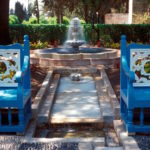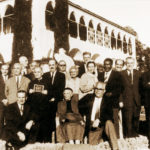
The Divine Lote Tree Beyond Which There is No Passing
In the previous article, we saw that the first Tajalli, of Bahá’u’lláh’s four Tajalliyat, draws on the symbol of the “Spirit of Truth” found in Christian scriptures.
The fourth Tajalli discusses similar concepts to those in the first Tajalli, but using different symbols – in this case from Islamic scripture.
The fourth Tajallí is concerning Divinity, Godhead and the like. Were a man of insight to direct his gaze towards the blessed, the manifest Lote-Tree and its fruits, he would be so enriched thereby as to be independent of aught else and to acknowledge his belief in that which the Speaker on Sinai hath uttered from the throne of Revelation. …[1]
O kindreds of the earth! Incline your ears unto the Voice from the divine Lote-Tree which overshadoweth the world and be not of the people of tyranny on earth … [2]
The Lote Tree is a marker that stands at the end of a path. It marks the point beyond which there is no passing. It symbolises the highest extent to which human knowledge can attain. In Bahá’u’lláh’s writings it is a symbol of the Manifestation (or Messenger) of God.[2]
In the Qur’an it appears as follows:
Then came he (Gabriel) nearer and approached, …
What will ye then dispute with him as to what he saw?
He had seen also another time,
Near the Sidra-tree, which marks the boundary.
Near which is the garden of repose.
When the Sidra-tree was covered with what covered it,
His eyes turned not aside, nor did it wander,
For he saw the greatest of the signs of his Lord.[Quran 53:6-16]
It is similar to the concept of the “only way” in the first Tajalli. This time the end point of the “way” is described. It is interesting to reflect that in this one work, Bahá’u’lláh writes to multiple audiences – he uses both Arabic and Persian to reach different audiences. He draws on both Christian and Muslim traditions – similarly speaking to different audiences. The use of different symbols evokes both oneness of humanity and oneness of religion.
(This article is the 161st in a series of what I hope will be 200 articles in 200 days for the 200th anniversary of the birth of Bahá’u’lláh. The anniversary is being celebrated around the world on 21 and 22 October 2017, The articles are simply my personal reflections on Bahá’u’lláh’s life and work. Any errors or inadequacies in these articles are solely my responsibility.)







